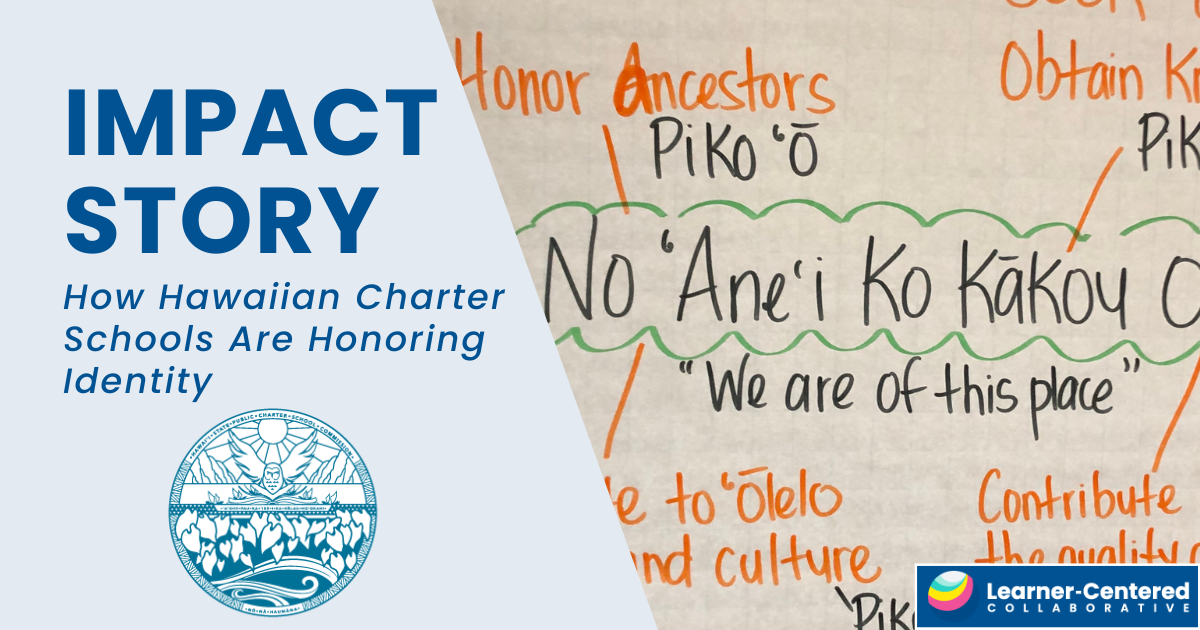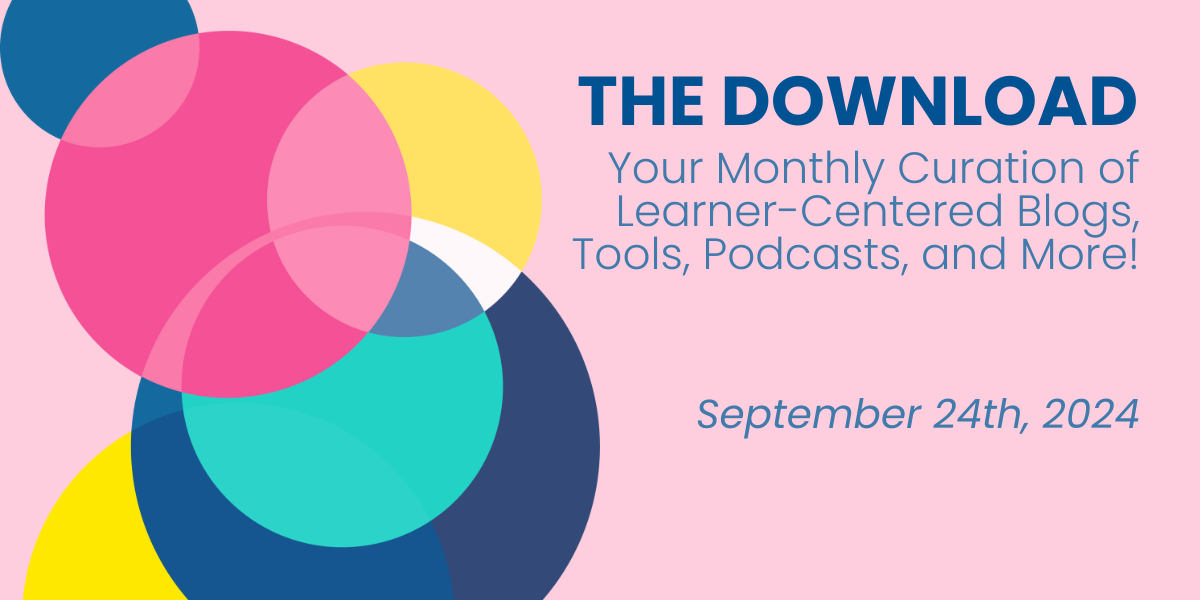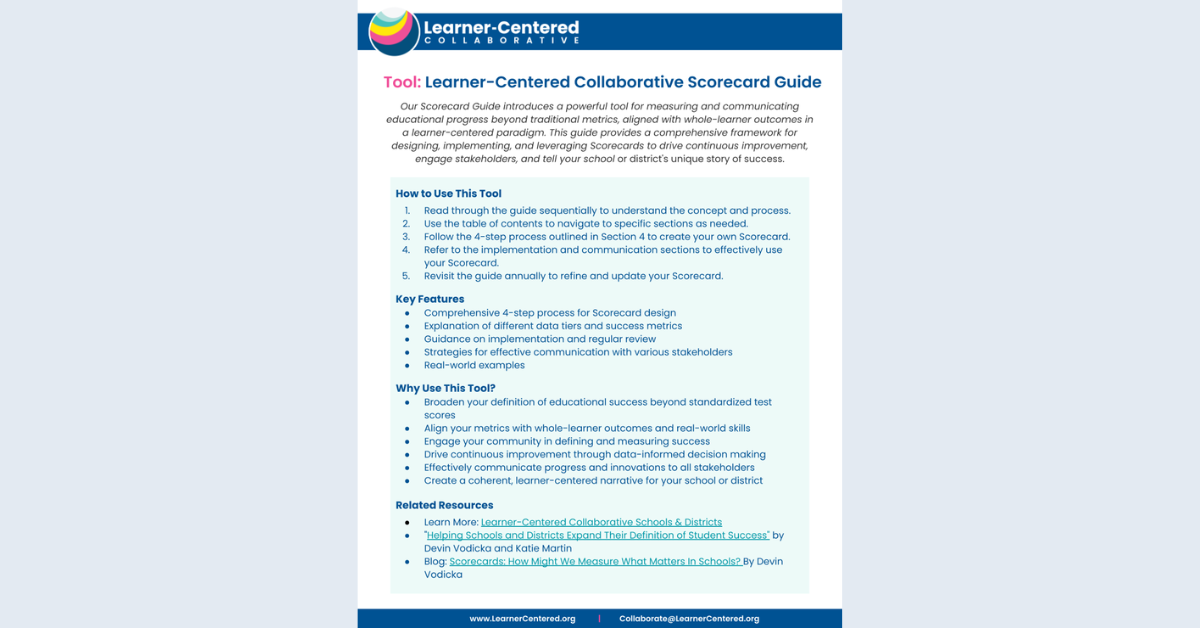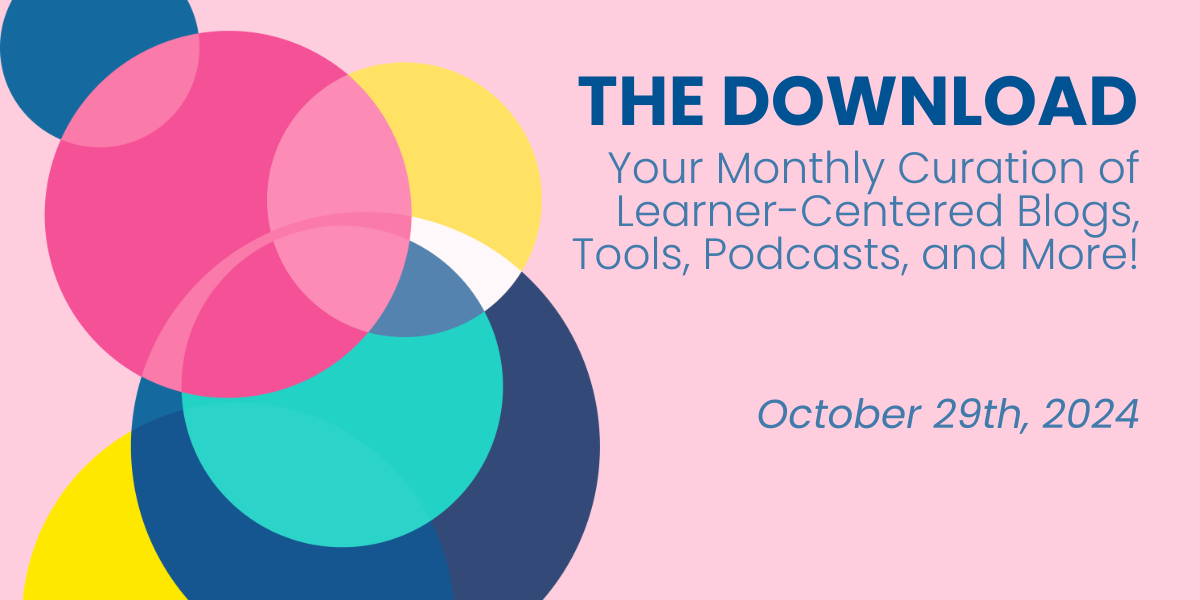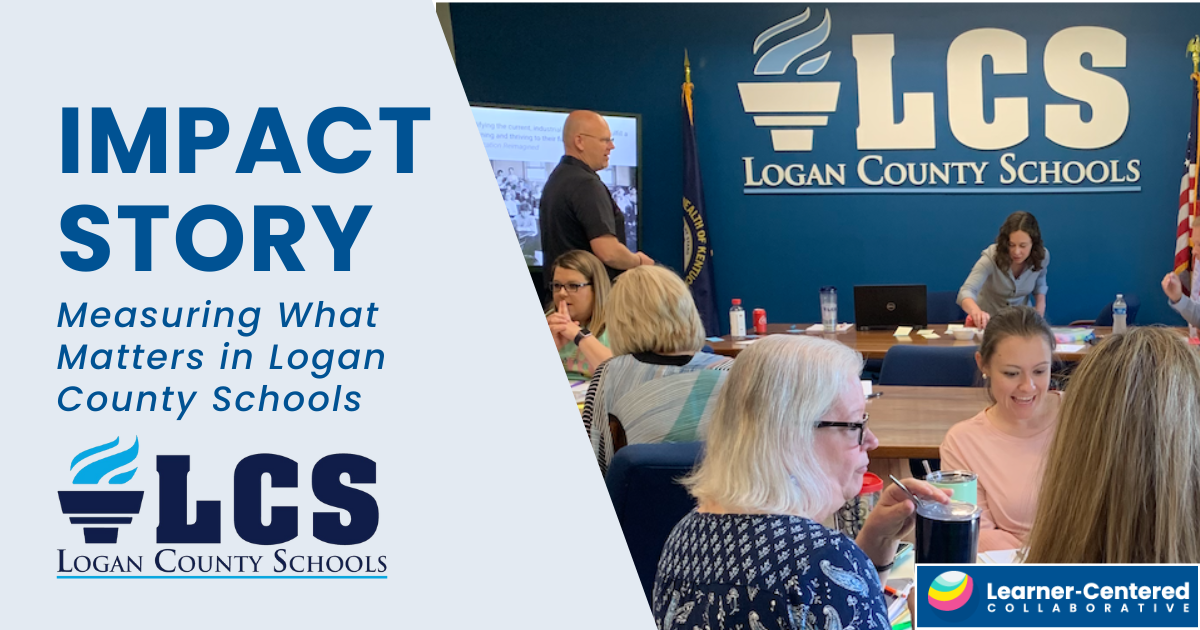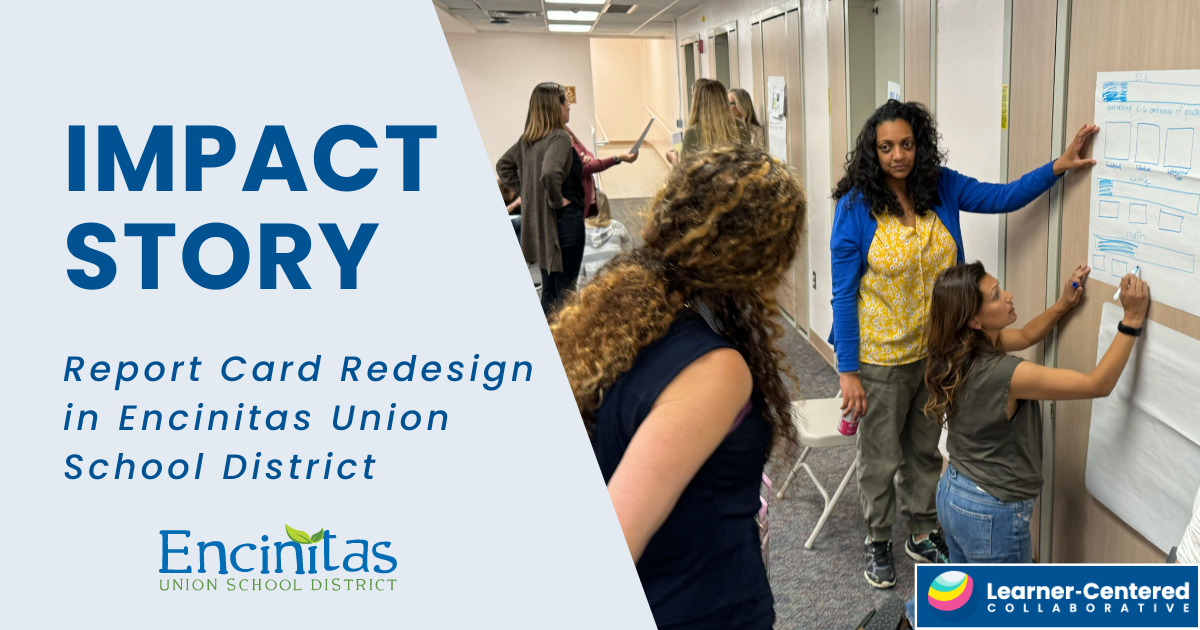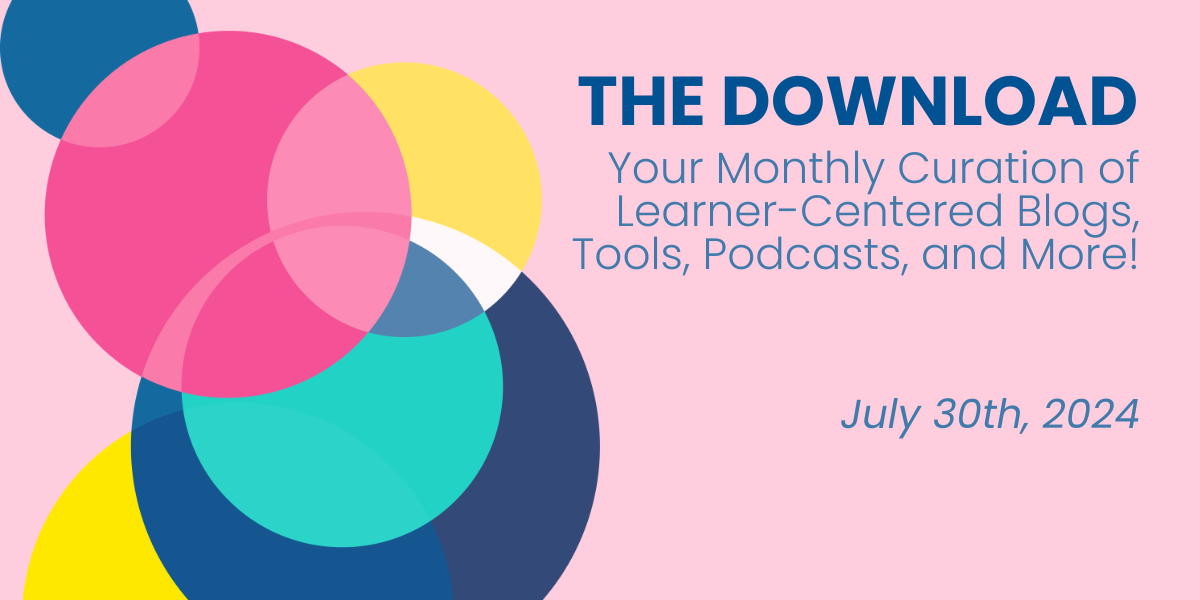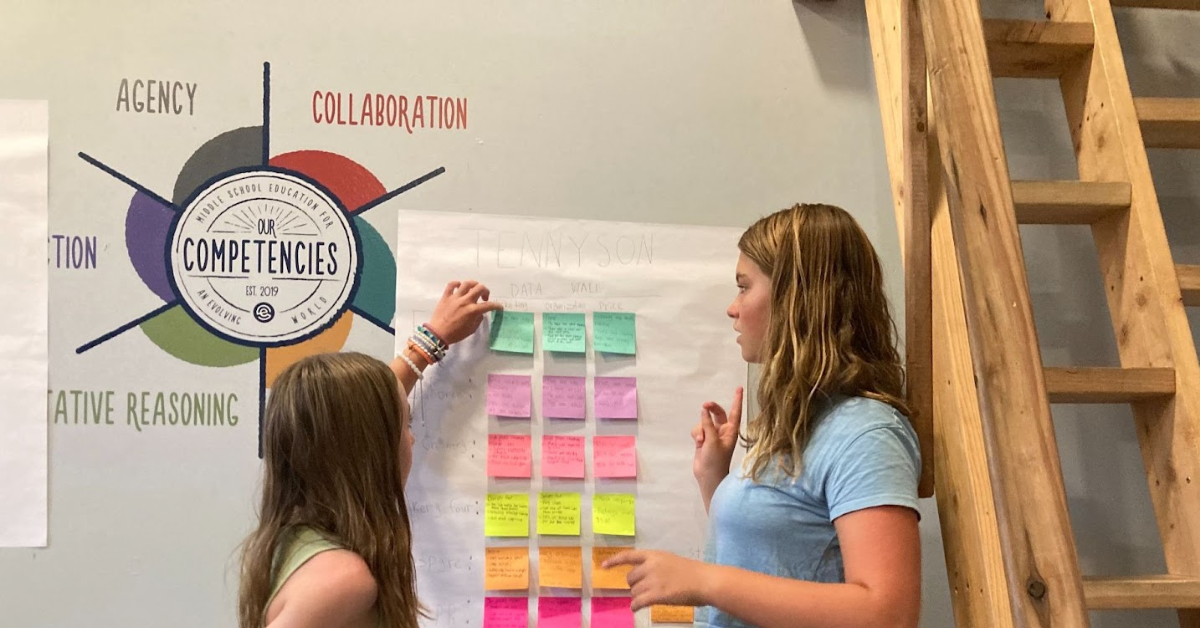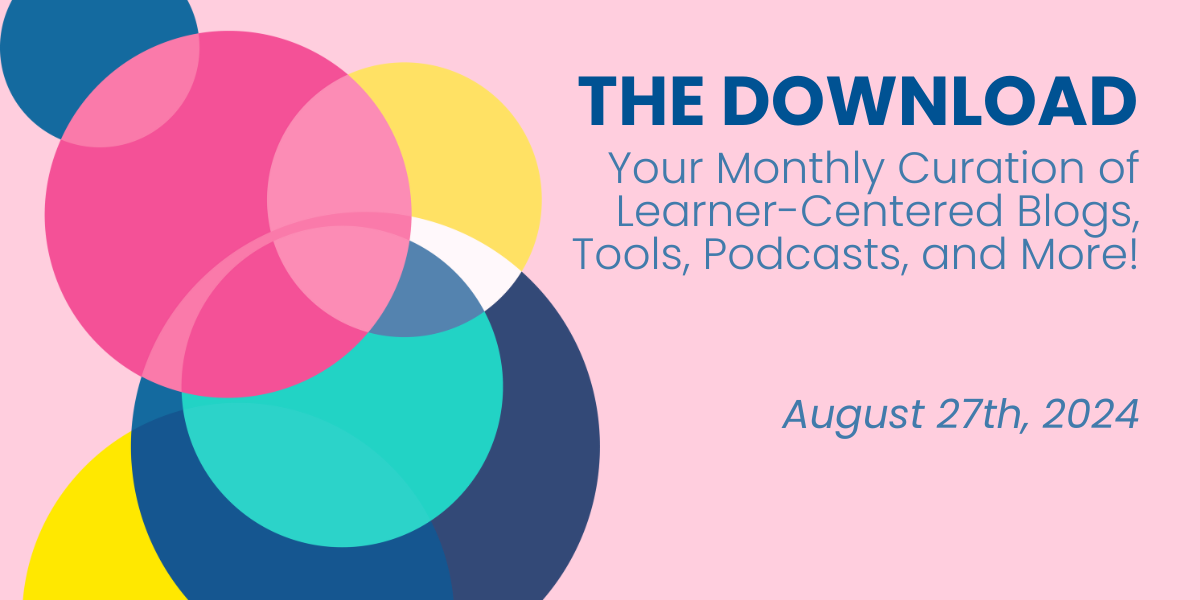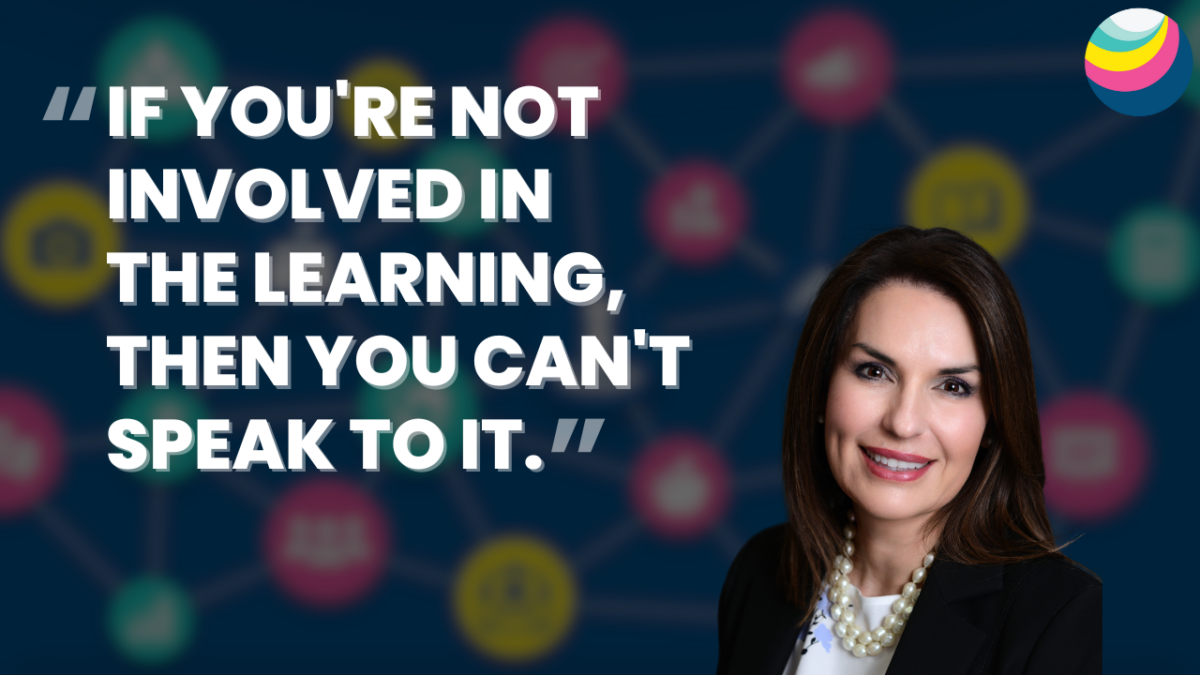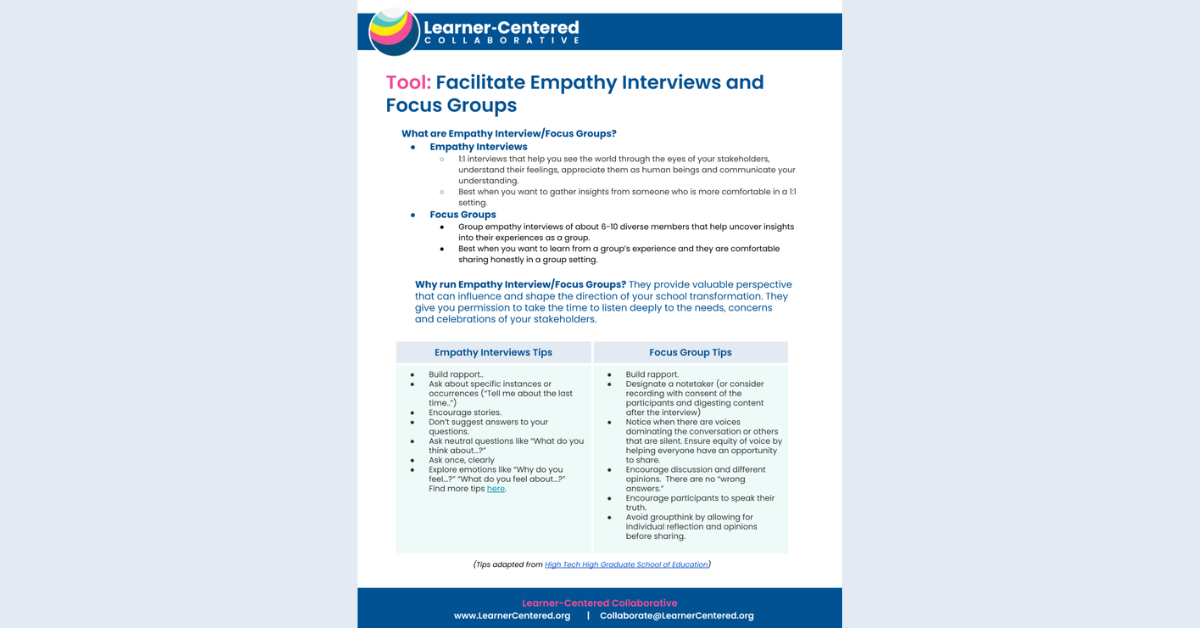Blog
How Hawaiian Charter Schools Are Honoring Identity
Brought together by a shared vision to create a more expansive student transcript reflecting whole child learning, charter schools in Hawaii offer a glimpse into their process—from vision to implementation.
Big Moves
Portfolios
Overview A school or district-wide portfolio structure supports learners in curating evidence of their learning and growth over multiple years, across multiple courses or learning experiences. Portfolios are student-curated collections of work that include a self-reflection on progress over time and why that piece was selected to include in the portfolio. They work best…
Big Moves
Student-Led Advisory Councils or Boards
Asking students their opinions about decisions that affect them in their school community is a great place to start listening to learners. However, taking it a step further puts students at the decision-making table. Inviting students to participate in school or district-wide decisions by being on the board, a part of a student government…
Big Moves
Defense of Learning
Overview A school or district-wide defense of learning (sometimes called Presentation of Learning, Showcase of Learning, Demonstration of Learning or Celebration of Learning) is a way for students, at designated milestones or grade levels, to share a body of evidence of learning and reflect on how they grew towards their own and school/district goals,…
Big Moves
Student-Led Conferences
Overview A student-led conference is a meeting facilitated by students with their families and teachers. In this meeting, students reflect on their overall learning, progress towards goals, and next steps. Students who participate by leading their own conferences take more ownership of their learning and the communication between school and home becomes more transparent.…
Big Moves
Advisory
Advisory is a recurring and consistent small-learning community with dedicated time in the daily or weekly schedule intended to provide opportunities to cultivate a sense of belonging, support learner agency, and explore strengths and interests. In Expeditionary Learning schools this structure is called “Crew” and it can go by many different names. It also…
Tools
Learner-Centered Scorecard Guide
Our Learner-Centered Collaborative Scorecard Guide introduces a powerful framework for measuring and communicating educational progress beyond traditional metrics. This comprehensive guide provides a 4-step process for creating, implementing, and leveraging Scorecards to drive improvement, engage stakeholders, and showcase your school or district’s unique success story in a learner-centered paradigm. Explore this tool to…
BlogWebinars
Webinar Recording: Competency-Based Assessment: From Measuring Seat Time to Demonstrating Learning
In this webinar, Bostonia Global’s Nerel Winter and School Foundry’s Jeff Petty share innovative ways to assess student learning through real-world demonstrations and exhibitions. We delve into the importance of performance assessments, where students not only showcase their knowledge but also their ability to apply it in practical, meaningful ways. Questions explored include: How…
Blog
Measuring What Matters: Our Journey with Logan County Schools
Contributions from Katie Martin, Learner-Centered Collaborative At Learner-Centered Collaborative, we believe that meaningful change in education begins with a clear vision and community engagement. Our partnership with Logan County Schools exemplifies this approach, as we’ve work together to redefine success for their students and empower the entire learning community. Serving over 3,400 students across…
Big Moves
Design Competency-Based Professional Learning Structures
Overview To create learning experiences that meet the needs of all learners in the modern world, it’s essential to establish clear expectations for learning and teaching based on a shared vision. This involves creating educator competencies that determine what teachers need to know and do to create desired learning experiences. Teachers should be supported…
Blog
Report Card Redesign in Encinitas Union School District
Is redesigning a report card a technical or adaptive change? To answer this, we can turn to the model of technical and adaptive challenges developed by Ronald A. Heifetz (Heifetz & Laurie, 1997; Heifetz & Linsky, 2002). This framework provides valuable insights into the nature of change in education and other fields (Network for…
Blog
What Happens When You Let Learners Lead? Embark Learners Share Their Insights
This work is a collaborative effort by Learner-Centered Collaborative in partnership with Eli Yoon, 6th grade learner; Tahliiya Harris, 6th grade learner; Vida Mennell, 7th grade learner; and Carissa Solomon, Senior Lead Educator at Embark Education in Denver, CO. Two learners work to organize the contents of the Essential Manual they wrote to support…
BlogWebinars
Webinar Recording: Personalized Professional Development with Lamont Elementary School District
Explore personalized professional development with Lamont Elementary School District in our latest webinar. LCC Partner Catina Hancock and Superintendent Lori Gonzalez share strategies for implementing personalized PD initiatives. Learn about: Lamont ESD’s three-tiered approach to personalized PD Increasing educator self-reflection by 30% in 4 months Combining quality resources with collaboration time Impact of leadership…
Tools
Facilitate Empathy Interviews and Focus Groups Tool
Our Empathy Interview and Focus Group Tool provides a comprehensive guide for conducting both one-on-one interviews and focus groups. It includes tips for building rapport, asking effective questions, and ensuring equity of voice. By using this resource, you’ll be able to uncover bright spots, key challenges, and surprising insights that can inform your…
